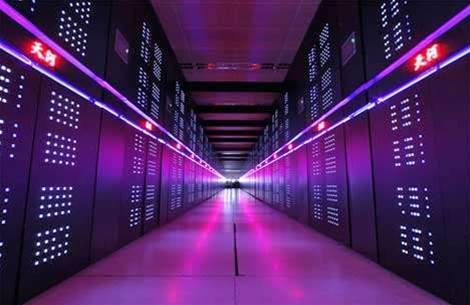The Tianhe-2 supercomputer, which broke cover last month, has officially been crowned the world's fastest by the TOP500 list.

Tianhe-2 managed 33.86 peta-floating point operations per second (flop/s) with the Linpack benchmark, as measured by TOP500 compiler professor Jack Dongarra [PDF] from the University of Tennessee.
The ranking relegated the Titan supercomputer in the United States department of energy's Oak Ridge National Laboratory to the second place. Titan achieved 17.59 petaflop/s.
The Chinese supercomputer will be deployed by the country's National University of Defence Technology and is in fact capable of even higher peak performance, hitting 54.9 petaflop/s which compares to roughly 27.1 petaflop/s for the Titan.
A Fujitsu Primergy CX250 S1 system, built with 2.6 GHz Intel E5 series Xeon processors and deployed at the Australian National University, scored 978.6 teraflop/s in the Linpack test, placing it at number 27 in the world.
Built with 16,000 computing nodes and taking up 720 square metres of space, Tianhe-2 is Intel based. Each node has two Intel Ivy Bridge Xeon processors and three Xeon Phi ones. In total, Tianhe-2 has 3.12 million computing cores, 1PB of memory and draws a whopping 17.8 mega Watts of power, which works out as approximately 1,886Mflop/s per Watt.
In comparison, the Titan Cray XK7, which is built around NVIDIA K20 graphics cards providing 18,688 compute nodes, has a power draw of 8.2MW, or 2,143Mflop/s per Watt.
While processors and computing cores are becoming increasingly energy efficient, the interconnects between them continue to use substantial amounts of power. This has led some observers such as Horst Simon at the Lawrence Berkeley National Laboratory's energy research scientific computing centre to doubt current technology will allow for exascale computing, as the power draw required will be too large.
The United States, EU and China are racing to build the first exascale computer by 2020. However, Simon said [PDF] the power consumption hurdle is too large, and is wagering US$2,000 of his own money that no exascale computer will be built by then.


_(20).jpg&h=140&w=231&c=1&s=0)








 iTnews Executive Retreat - Security Leaders Edition
iTnews Executive Retreat - Security Leaders Edition











_(1).jpg&h=140&w=231&c=1&s=0)



